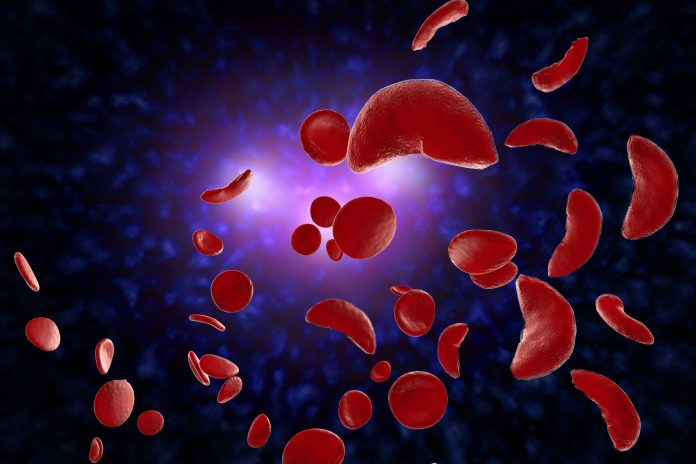
Boston Medical Center researchers say they have discovered a small molecule that increases fetal hemoglobin production in human blood stems cells which results in fewer sickled red blood cells and provides a potential new treatment for sickle cell disease.
Sickle cell disease are relatively rare—affecting 100,000 people in the U.S. But the Centers for Disease Control and Prevention note it disproportionately affects people who are Black who represent more than 90% of all cases.
The disease is characterized by the crescent shapes of some red blood cells, is the result of a genetic defect affecting hemoglobin, the protein that carries oxygen from the lungs to tissue throughout the body. In the disease, hemoglobin clumps together and blocks blood flow which can cause severe pain. Currently, the most common first-line treatment for sickle disease is hydroxyurea which can help reduce sickling blood cells and reduces pain in some people treated with it.
Hydroxyurea work by boosting fetal hemoglobin, which most people stop producing after birth, but has been shown to reduce sickled red bloods cell. Unfortunately, boosting of fetal hemoglobin can cause toxicity and is not tolerated by many patients. For this new research, published in Wednesday in Science Advances, the Boston Medical Center investigators tested the effects of targeting a protein found in fat tissue that plays a role in the maturation and survival of red blood cells, on fetal hemoglobin production, and sickled cells, called the peroxisome proliferator-activated receptor gamma coactivator 1- α (PGC-1 α).
Studying the small molecule, called SR-18292, to target PGC-1 α in a mouse model of sickle cells disease, the team found that it increased fetal hemoglobin production and led to decreased production of sickle shaped red blood cells. When combined with hydroxyurea, SR-18292, showed an even higher boost to the production of fetal hemoglobin.
“Our research shows that combining a small molecule with hydroxyurea enhances the production of fetal hemoglobin through different mechanisms. This could provide a vital new treatment option for sickle cell disease patients who don’t respond well to hydroxyurea alone,” said senior author Shuaiying Cui, PhD, an associate professor of hematology and medical oncology at Boston University Chobanian & Avedisian School of Medicine.
To seek answers to why SR-18292 had this effect, the team then conducted single-cell sequencing of human blood stem cells treated with the small molecule to see if it affects genes that control the production of fetal hemoglobin. These experiments uncovered several genes with differing expression after being exposed to SR-18292. Notably, the team showed that it downregulated BCL11A, which is normally responsible for repressing the production of fetal hemoglobin and is the same gene targeted by the drug Casgevy, the first gene therapy approved by the FDA that uses CRISPR/Cas9 gene editing technology.
The promise of SR-18292 is that it is a small molecule that could be produced at scale as a treatment for sickle cells disease, unlike other approved therapies that also carry a high price tag.
“This breakthrough represents a significant step forward in BMC’s quest for more effective therapies to treat sickle cell disease for all patients,” Cui said. “Someday we hope that our drug can be applied to patients across the globe who might not have access to existing gene therapies for the condition.”





